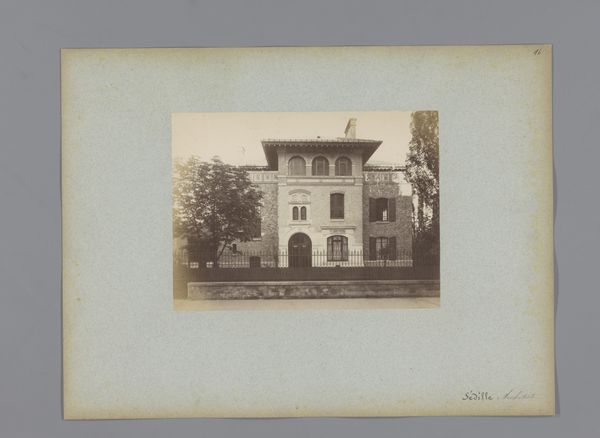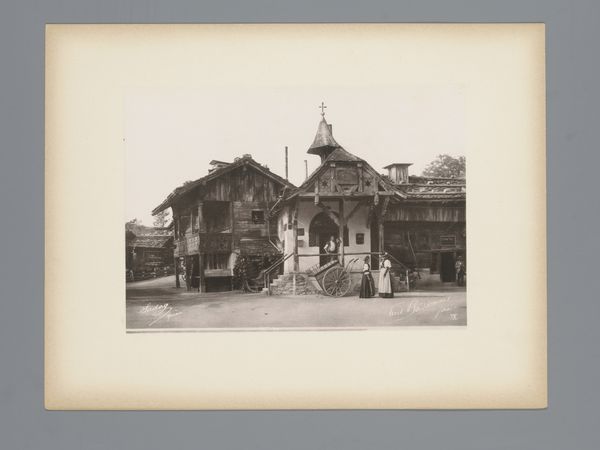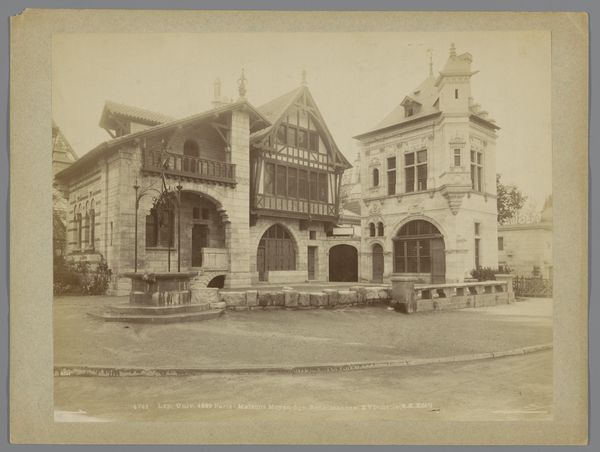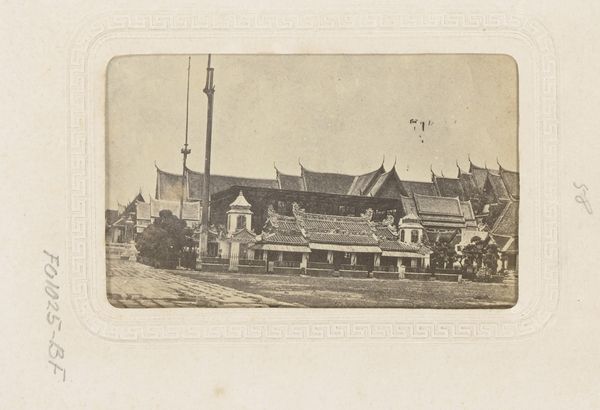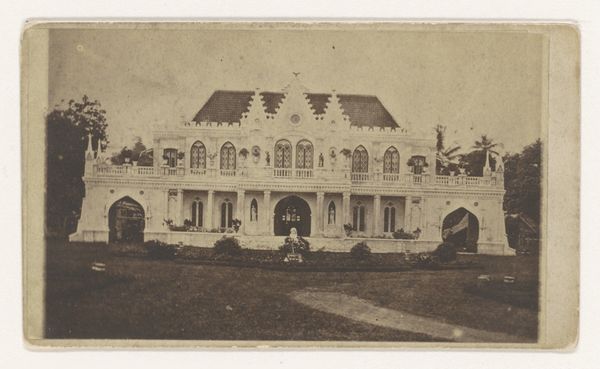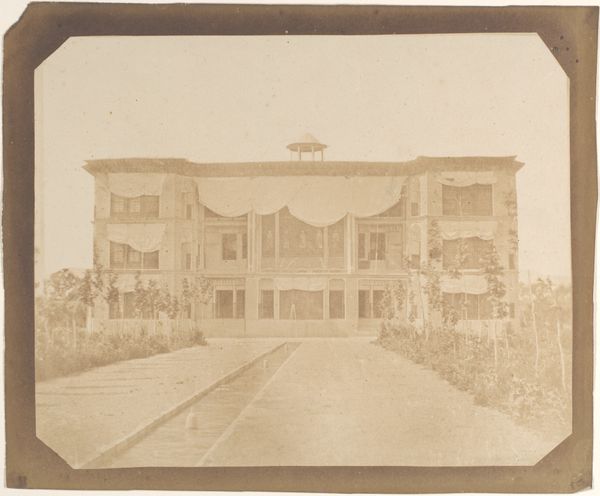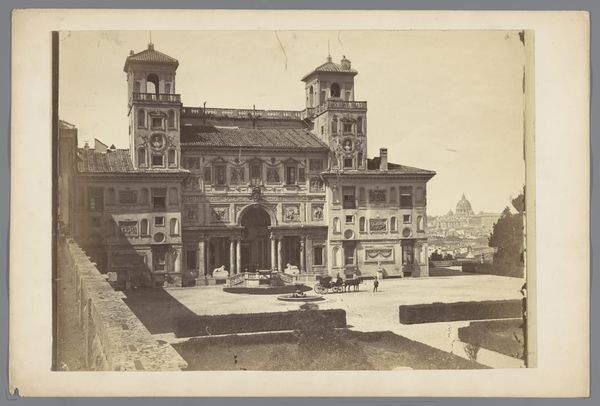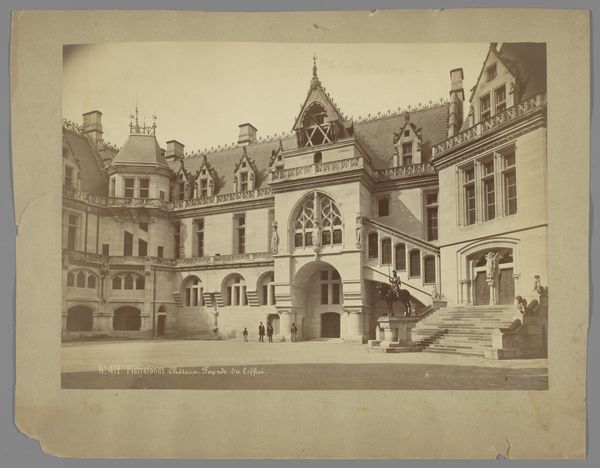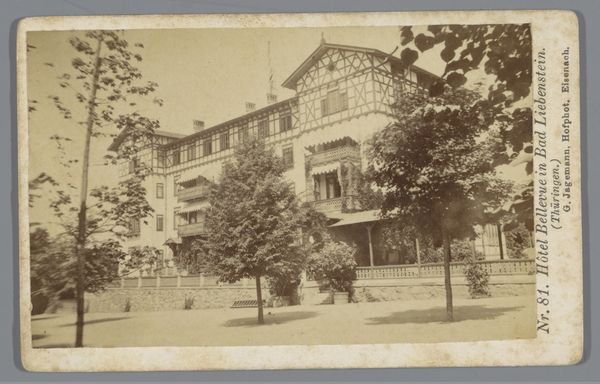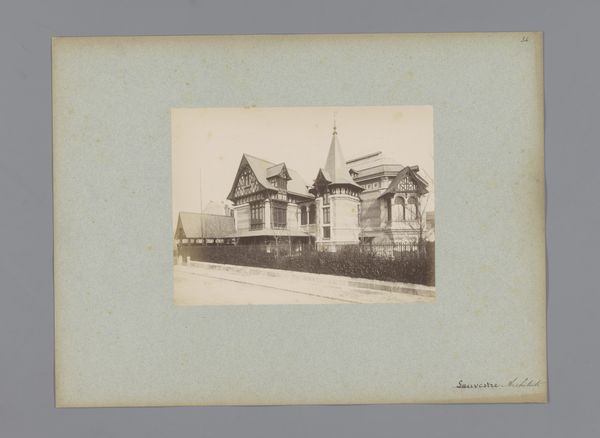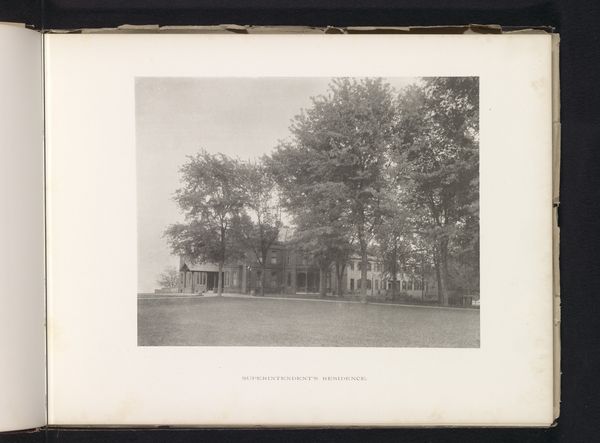
photography, gelatin-silver-print
#
pictorialism
#
landscape
#
photography
#
gelatin-silver-print
#
cityscape
Dimensions: height 173 mm, width 227 mm
Copyright: Rijks Museum: Open Domain
Curator: Frédéric Boissonnas, a photographer known for his pictorialist style, captured this “Stadsgezicht in Luzern,” or city view in Lucerne, before 1896, using the gelatin-silver print medium. What's your immediate impression? Editor: A stillness, a profound sense of architectural geometry, yet rendered with soft edges. It has an almost dreamlike quality because of the diffused light. The composition is fascinating, the horizontal lines are dominating. Curator: The soft focus and the gelatin silver printing technique typical of Pictorialism lend the photograph an emotional depth beyond a simple documentary cityscape. The buildings become emblems of civic memory and cultural identity. What is it evoking, do you think? Editor: Structurally, I think the facade’s repetition establishes rhythm, but it’s subtle. See how the planes are arranged into the architectural elements which generate a series of light and shadow contrasts. This really invites the eye in. Curator: It's interesting how the photograph blurs the line between documentary and artistic expression. It shows not just the appearance of the buildings but the feeling, or perhaps the cultural psyche associated with a Swiss city. What I mean is, Luzern as an emblem of cultural resilience. Editor: Yes, I concur with the symbolism! But technically, also observe how Boissonnas manages depth and flattens space, the soft contrast gives every volume of these structures a cohesive character and yet a distinctive separation from the next. The subdued gray tones really create atmospheric cohesion. Curator: Thinking about Lucerne itself, these architectural symbols—the pitched roofs, the quaint structures—echo the Swiss values of stability and history, the people, their traditions. Editor: Absolutely. By embracing the pictorial aesthetic, he turns this place, Lucerne, into a universally understood metaphor for the quintessential old town. It's clever. Curator: It does reflect how we see cities, not just how they factually are, layering meaning onto a physical location. A city isn’t just brick and mortar; it’s a canvas for projecting our communal dreams and identities. Editor: That's a great reflection to hold onto. Seeing these spaces in black and white really pulls them outside the modern and pushes them toward a sense of timeless cultural preservation. Curator: The past visualized. Thanks, as always, for lending your insightful gaze.
Comments
No comments
Be the first to comment and join the conversation on the ultimate creative platform.
